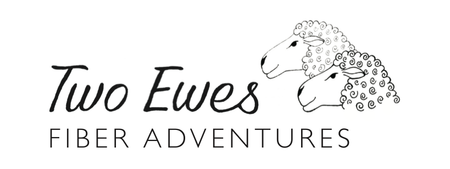Hi and welcome to the Weave Along! (If you are here for an audio episode, look at the post just before or just after this.)
The Winter Weave Along 2018-19 started November 1 and goes until March 31. That gives us five months of weaving time to mix in with the knitting, crochet, and spinning. For those of us who do a variety of fiber arts, finding the balance between them can be a challenge. If you are a veteran weaver, perhaps this Weave Along will help put a little more weaving into your project mix. If you are a new weaver, five months of focus on weaving can really jumpstart your mastery of the craft!
If you're new to the podcast and to weaving, here is a link to 17-18 Lesson 1: Weaving Vocabulary. Even if you're not new you might want to do a little bit of review from last season when we also talked about yarn choice and sett. Here is a link to 17-18 Lesson 2: Choosing Yarn and Sett. Both of those lessons are pdf files.
Ok, now for today's topic, Pattern Schmattern, otherwise known as We Don't Need No Stinkin' Pattern! Yes, it's true. You don't need to scour the Internet, old issues of Handwoven, or even your public library, for a weaving pattern if you want to make something. You just need to determine the purpose of your fabric and the dimensions. Well, you'll also want to think about the weave structure, but for today, let's just say we're using tabby, aka plain weave, or possibly a twill structure. Regardless, you can use the project planning sheet to figure out how much yarn you need and how to set up your loom to get the project you want.
So, what do you want to make? I always suggest that new weavers make dishtowels, as you will have noticed if you read Lesson 2. I also suggest that you only make one or, at most, two. Why? Because a long project takes the fun out of it. How many new knitters do you know who said, "I want to learn to make a scarf!" How many of them actually finished the scarf? Much better to start with a smaller project for quick gratification and the thrill of finishing! Another good reason for making small projects is that it requires you to warp more frequently and that repetition is great for learning. Kind of like the cast on in knitting. If you learn to cast on, but then knit for months to finish a scarf, by the time the scarf is done you won't remember how to cast on. If instead you learn by making knitted dishcloths, you will be casting on over and over as you make the dishcloths.
Ok, so I'm trying to convince you to make a dishtowel as your first weaving project, but you don't have any cotton in your stash? Ok, well then, let's use wool or whatever you have on hand and make a rectangle that can sit in the center of your dining table. It would be about the same dimensions as the dishtowel but it doesn't have to be cotton.
Still thinking you want a scarf? Well, ok. It is your loom and your life after all! And besides, the calculations in the Project Planner I'm providing today will still apply. Ok, let's get to it! Today's "handout" is a template that will walk you through the calculations needed to plan for any weaving project. I also have an example of a project planning sheet that walks through the calculations for a project of two twill dishtowels.
The first thing you'll need to do to use the planner is to choose the yarn you want to use for warp and find out how many wraps per inch it has. Wrap it around a ruler. Don't squish it together tightly, let the yarns sit next to each other naturally. Here is an article that explains how to wrap the yarn and also gives estimated WPI for weights of yarn known by knitters and crocheters. The second thing you'll need to do is decide whether you are going to use tabby, aka plain weave, or a twill. If you have a rigid heddle loom, tabby is for you. Twill is possible on a rigid heddle, but it's more complicated. If you have a 4-harness (4-shaft) loom, either one is fine, and you can actually do both with the same threading. However, the calculations you do should be based on whichever weave structure you plan to use as the predominant one.
Now you have all the information you need for your project planning. Download the Project Planner and the example, grab a calculator and a pencil, and go plan a project!
If you'd like to listen to the episode when Marsha wove her first project, here is a link to the show notes page for that audio podcast. In the show notes there are photos that correspond to the different things we discussed. Also, I have housed these links in a page on the Two Ewes Fiber Adventures Ravelry Group. Look up at the top for the Pages tab.

